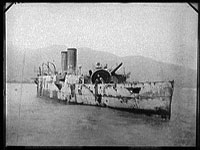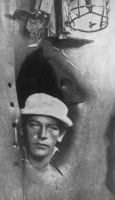The Spanish-American War
This iCue Mini-Documentary describes the American public's great interest in tabloid accounts of Cuba's fight for independence from Spain, which helped lead to the Spanish-American War.
This feature is no longer available.
This iCue Mini-Documentary describes the American public's great interest in tabloid accounts of Cuba's fight for independence from Spain, which helped lead to the Spanish-American War.
This feature is no longer available.
This iCue Mini-Documentary introduces the Platt Amendment, which allowed the U.S. to interfere in the affairs of Cuba.
This feature is no longer available.
This workshop will use the Choices' program's unit "Beyond Manifest Destiny: America Enters the Age of Imperialism" as a jumping-off point for discussing the Spanish-American War and the resulting U.S. colonial acquisitions, as well as how these may be taught.

The Spanish-American War was one of the first wars captured on film. This website features 68 motion pictures of the war and the Philippine Revolution produced by the Edison Manufacturing Company and the American Mutoscope & Biograph Company between 1898 and 1901. The films include footage of troops, ships, notable figures, parades, and battle reenactments shot in the U.S., Cuba, and the Philippines. Theodore Roosevelt's Rough Riders are featured alongside footage of the USS Maine in Havana harbor. "Special Presentation" puts the motion pictures in chronological order and brief essays provide historical context. "Collection Connections" provides thought-provoking activities and essay topics. This glimpse at early film footage enhances our understanding of the fledgling technology, and offers a way to better understand U.S. imperialism at the turn of the century. The films expose some of the ways in which the birth of cinema emerged alongside, and shaped, changing ideas of gender, race, sexuality, and nation.

This exhibit collects a series of chronologies, images, maps, bibliographies, biographies, essays, and other materials for studying the Spanish-American War. An overview essay discusses the historical context, including events leading up to the war and well-known individuals such as Jose Martí and Theodore Roosevelt.
There are four main sections: Cuba, the Philippines, Puerto Rico, and Spain. Each section presents an introductory essay, a chronology, and guides to related resources. An index offers short descriptive entries on 57 people, 13 places in Puerto Rico, Cuba, and the Philippines, and 21 events. Also available are a chronology and a selected bibliography of personal narratives, illustration sources, manuscripts, and maps. Finally, there is a list of additional Library of Congress resources and relevant American Memory presentations.